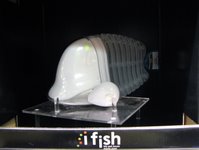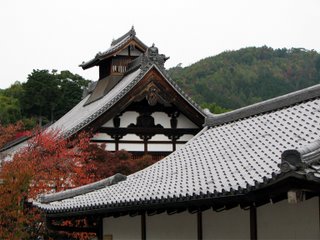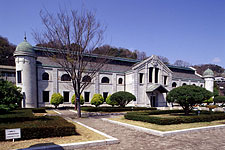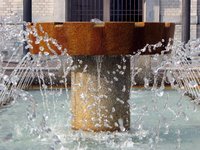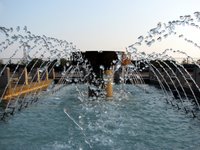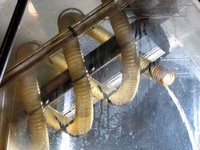Only 30 Shopping Days to Christmas...
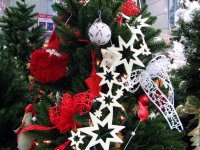 And that includes Christmas Day itself, by the way. Despite the fact that most people in Japan consider themselves Shinto or Buddhist, Christmas certainly seems to be very popular judging by the amount of seasonal merchandise on display in downtown Kobe. No sooner had the Halloween festivities finished than the jack o' lanterns and ghouls were speedily replaced by 'Merry Christmas' signs and (rather cool, it must be said) blue LEDs threaded through trees. But then it's no surprise really when you consider that a nation so dedicated to shopping is hardly going to pass up the commercial bonanza on offer courtesy of old Santee Claws (a salient reminder that the genius of Disney marketing can effect a seamless segue between the two occasions).
And that includes Christmas Day itself, by the way. Despite the fact that most people in Japan consider themselves Shinto or Buddhist, Christmas certainly seems to be very popular judging by the amount of seasonal merchandise on display in downtown Kobe. No sooner had the Halloween festivities finished than the jack o' lanterns and ghouls were speedily replaced by 'Merry Christmas' signs and (rather cool, it must be said) blue LEDs threaded through trees. But then it's no surprise really when you consider that a nation so dedicated to shopping is hardly going to pass up the commercial bonanza on offer courtesy of old Santee Claws (a salient reminder that the genius of Disney marketing can effect a seamless segue between the two occasions).
In Japan it is actually common to give Christmas presents. Parents give presents to their children, but children do not give presents to their parents. The reasoning behind this is that only Santa brings presents, so once the children no longer believe in Santa the presents are no longer given. Utterly logical, as you might expect. Christmas cake is also a little different from Western expectations, comprising a sponge cake with whipped cream and strawberries!
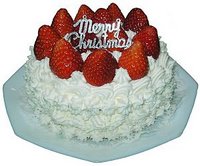 So what can you buy with your hard-earned yen in these parts? Well, not surprisingly, it's more a question of what can't you buy. As the weather wasn't too great this weekend, we went Christmas shopping...
So what can you buy with your hard-earned yen in these parts? Well, not surprisingly, it's more a question of what can't you buy. As the weather wasn't too great this weekend, we went Christmas shopping...
Socks are always a safe bet, and we've got Kutsushitaya Socks, proudly boasting of their merchandise that "knitted with a workman's spirit, they represent an air of the time" (although it must be said that in our house said air is not always so fresh). Despite sounding for all money like a communist manifesto, it's actually just Japanese for 'socks shop'. Nice socks though.
It would be most unlike the Japanese not to inject proceedings with just a hint of sauciness, and here it is, in the form of some very un-PC apparel for the young lady wishing to partake of the Christmas spirit and maybe cheer up some old fat blokes in the process.

There were a huge number of these costumes, all variations on the same theme but with ever more imaginative names, like 'Milky Santa Girl', 'Soft Honey Santa Girl' and my personal favourite 'Pixie Food Santa'. Jessica chose her favourite too, although we didn't buy it. There didn't seem to be many takers for the 'tall bloke in a schooldress' costume in the background either.
Still stuck for a present? Forget ipods - we've got iFish! We've got spatulas in the shape of frogs. We've got shoes with animal faces on.
And if all else fails, for those very special ones we've got that old favourite, the bowl of fruit, although at a somewhat eye-popping price. This little ensemble below - let's see, there's a melon, an apple, a pear, and orange, some other bits and bobs hiding around the back... oh, and a basket - will set you back a cool 48 quid!





